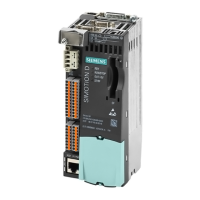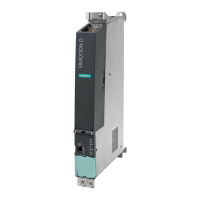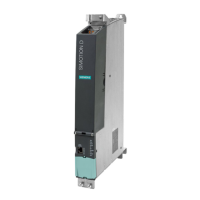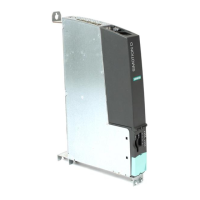Table A-1 Comparison of local and global measuring inputs
Local measuring input Global measuring input
Hardware supported D410, D410-2, D4x5, D4x5‑2
(terminal X122/X132), CX32,
CX32‑2,
CU310, CU310-2, CU320,
CU320‑2
TM15, TM17 High Feature, D410, D410-2,
D4x5, D4x5‑2 (terminal X122, X132, X142),
CX32, CX32‑2, CU310, CU310-2, CU320,
CU320‑2
Measurement procedure With a signal edge at the relevant
input, the current actual values of
an encoder connected to a control
unit are measured with positioning
accuracy to determine lengths and
distances.
With a signal edge at the relevant input, the
current
actual values of one or more encoders
are measured using time stamp functionality
with positioning accuracy in order to provide
information for determining lengths and
distances (possible with any encoders
included in the project).
Configuration of the TO
measuringInput
in SIMOTION SCOUT
The assignment of inputs is always
permanent depending on the
hardware of the control unit and is
performed during the configuration
of the measuring input TO using the
measuring input number.
The assignment of inputs is not fixed
depending on the hardware and is performed
during the configuration of the TO
measuringInput by means of symbolic
assignment or the hardware address.
Measuring input TO setting: Single
measurement
1)
Yes Yes
Measuring input TO setting: Cyclic
measurement
2)
No Yes
D410, D410-2, D4x5, D4x5‑2 (terminal X122,
X132), CX32, CX32‑2, CU310, CU310-2,
CU320, CU320‑2:
The minimum interval between two
measurements is 3 position control cycle
clocks (max. 2 edges per measurement).
D4x5‑2 (terminal X142), TM17 High Feature:
The minimum interval between two
measurements
is 1 position control cycle clock
(max. 2 edges per measurement).
TM15:
No cyclic measurement available
Use of multiple measuring input TOs
on one axis/encoder. They can be
active concurrently
No Yes
Listening TO measuringInput No Yes
Measuring on virtual axes No Yes
Measuring on axes attached to a
different drive unit
No Yes
1)
Measurement jobs must be issued individually for each measurement. Several interpolation cycle clocks lie between two
measurements.
2)
The measuring is activated just once and runs cyclically until deactivated
SIMOTION Utilities & Applications includes, for example, a tool with the following functions:
●
Estimate of the time between initiating a measurement job to the time at which the
measuring input job in the drive acts
● Estimate of the minimum time between 2 measurement jobs
Configuring drive-related I/Os (without symbolic assignment)
A.2 Local and global measuring inputs
SIMOTION D410
216 Commissioning Manual, 04/2014
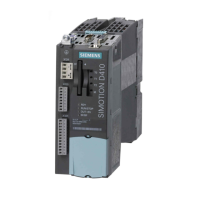
